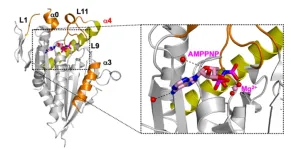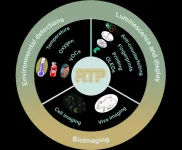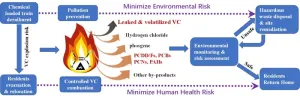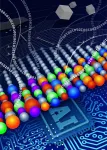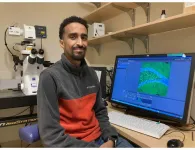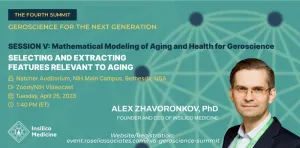Hidden ice melt in Himalaya: Study
Revealing 'invisible' glacier loss underwater
2023-04-03
(Press-News.org)
A new study reveals that the mass loss of lake-terminating glaciers in the greater Himalaya has been significantly underestimated, due to the inability of satellites to see glacier changes occurring underwater, with critical implications for the region's future projections of glacier disappearance and water resources.
Published in Nature Geoscience on April 3, the study was conducted by an international team including researchers from the Chinese Academy of Sciences (CAS), Graz University of Technology (Austria), the University of St. Andrews (UK), and Carnegie Mellon University (USA).
The researchers found that a previous assessment underestimated the total mass loss of lake-terminating glaciers in the greater Himalaya by 6.5%. The most significant underestimation of 10% occurred in the central Himalaya, where glacial lake growth was the most rapid. A particularly interesting case is Galong Co in this region, with a high underestimation of 65%.
This oversight was largely due to the limitations of satellite imaging in detecting underwater changes, which has led to a knowledge gap in our understanding of the full extent of glacier loss. From 2000 to 2020, proglacial lakes in the region increased by 47% in number, 33% in area, and 42% in volume. This expansion resulted in an estimated glacier mass loss of around 2.7 Gt, equivalent to 570 million elephants, or over 1,000 times the total number of elephants in the world. This loss was not considered by previous studies since the utilized satellite data can only measure the lake water surface but not underwater ice that is replaced by water.
"These findings have important implications for understanding the impact of regional water resources and glacial lake outburst floods," said lead author ZHANG Guoqing from the Institute of Tibetan Plateau Research, CAS.
By accounting for the mass loss from lake-terminating glaciers, the researchers can more accurately assess the annual mass balance of these glaciers compared to land-terminating ones, thus further highlighting the accelerated glacier mass loss across the greater Himalaya.
The study also highlights the need to understand the mechanisms driving glacier mass loss and the underestimated mass loss of lake-terminating glaciers globally, which is estimated to be around 211.5 Gt, or roughly 12%, between 2000 and 2020.
"This emphasizes the importance of incorporating subaqueous mass loss from lake-terminating glaciers in future mass-change estimates and glacier evolution models, regardless of the study region," said co-corresponding author Tobias Bolch from Graz University of Technology.
David Rounce, a co-author from Carnegie Mellon University, noted that in the long run, the mass loss from lake-terminating glaciers may continue to be a major contributor to total mass loss throughout the 21st century as glaciers with significant mass loss may disappear more rapidly compared to existing projections.
"By more accurately accounting for glacier mass loss, researchers can better predict future water resource availability in the sensitive mountain region," said co-author YAO Tandong, who also co-chairs Third Pole Environment (TPE), an international science program for interdisciplinary study of the relationships among water, ice, climate, and humankind in the region and beyond.
END
[Attachments] See images for this press release:


ELSE PRESS RELEASES FROM THIS DATE:
2023-04-03
Professors Stefan Seelecke and Paul Motzki at Saarland University are developing intelligent materials that are opening up new avenues in sound reproduction technology: lightweight loudspeakers that use far less energy than their conventional counterparts, novel shapes for sound and signal generators and applications involving noise cancelling textiles. The basis for these smart materials are ultrathin silicone films that can act as artificial muscles with their own built-in sensors. The research team will be showcasing their new technology at this year’s Hannover Messe from 17 to 21 April (Hall 2, Stand B34).
Ultrathin films may well replace the heavy and power-thirsty ...
2023-04-03
New Orleans, LA -- LSU Health New Orleans Louisiana Tumor Registry (LTR) has published the sixth report of statewide cancer incidence rates by census tract. The publication, which reports 2010-2019 combined cancer incidence data, found that 81% of the census tracts in Louisiana met publication criteria for all cancers combined. For specific cancer types, fewer census tracts met the criteria. For the Louisiana census tracts meeting the criteria, the incidence rates for all cancers combined and for specific cancer types were compared with the corresponding rates for the entire state. The ...
2023-04-03
Anticancer drugs are pivotal to cancer treatment, but their toxicity may not always be limited to cancer cells, resulting in harmful side-effects. To develop anticancer therapies that have fewer adverse effects on patients, scientists are now focusing on molecules that are less toxic to cells. One such group of drugs is the "kinesin inhibitors." These inhibitors prevent cancer progression by explicitly targeting kinesin motor proteins, which are required for the division of cancer cells. Centromere-associated protein E (CENP-E), a member of the kinesin motor protein, is a promising target for inhibitor therapy, as it is essential for tumor cell replication. However, determining the ...
2023-04-03
Organic materials with room-temperature phosphorescence (RTP) emission have attracted extensive attention due to extraordinary properties including long lifetime, large Stokes shift, stimuli-responsiveness, and so on, and show bright prospects in broad fields. However, the energy of the excited state of organic phosphors is easily consumed through thermal radiation and collision deactivation. Therefore, numerous design strategies such as creating a rigid environment through crystallization and supramolecular assembly are employed to improve the luminescent characteristics of RTP materials by restricting nonradiative transition, enhancing intersystem crossing, and so forth. A team ...
2023-04-03
ROCKVILLE, Md. (April 3, 2023)— Today the American Kidney Fund (AKF) announced the recipients of this year’s Clinical Scientist in Nephrology (CSN) fellowship program, in which promising researchers work to improve the quality of care for people living with kidney disease and promote clinical research in nephrology. Dr. Alexandra Bicki, a pediatric nephrology fellow at the University of California, San Francisco, will be working on identifying facilitators and barriers to home dialysis and living kidney donor transplantation among adolescents and young adults, while Dr. Nivetha Subramanian, a nephrology fellow at ...
2023-04-03
SAN ANTONIO – April 3, 2023 — Southwest Research Institute has installed a large-capacity liquid hydrogen tank to expand its advanced hydrogen energy research initiatives. Leveraging the tank’s capabilities alongside a multidisciplinary research approach, SwRI endeavors to explore technology opportunities and address obstacles related to hydrogen energy research and development.
The SwRI liquid hydrogen storage tank has a capacity of 17,000 gallons and will provide the Institute with a cost-effective, reliable supply of hydrogen ...
2023-04-03
On February 3, 2023, a train derailed in the United States near East Palestine, Ohio, leading to the combustion of vinyl chloride. Following that accident, an international team of researchers undertook an in-depth analysis of the environmental consequences of the accident.
Their analysis is published in the journal Frontiers of Environmental Science & Engineering on March 15, 2023.
In their analysis, the team examined a series of questions related to the environmental risk and management of the chemical accident. “We emphasized that it is unscientific to overestimate or underestimate the environmental ...
2023-04-03
Advanced materials are urgently needed for everyday life, be it in high technology, mobility, infrastructure, green energy or medicine. However, traditional ways of discovering and exploring new materials encounter limits due to the complexity of chemical compositions, structures and targeted properties. Moreover, new materials should not only enable novel applications, but also include sustainable ways of producing, using and recycling them. Researchers from the Max-Planck-Institut für Eisenforschung (MPIE) review the status of physics-based modelling ...
2023-04-03
New research at the University of Massachusetts Amherst zeroes in on the root cause of adverse health effects from disruption of the body’s circadian rhythms, which typically occurs from jet lag and rotating work shifts.
The research, published in the journal eNeuro, also shows that the circadian clock gene Cryptochrome 1 (Cry 1) regulates adult neurogenesis – the ongoing formation of neurons in the brain’s hippocampus. Adult neurogenesis supports learning and memory, and its disruption has been linked to dementia and mental illness.
“Circadian disruption impacts a lot of things,” says lead author Michael Seifu Bahiru, a Ph.D. candidate in the ...
2023-04-03
Insilico Medicine founder and CEO Alex Zhavoronkov, PhD, a pioneer in generative AI for drug discovery and in uncovering dual pathways for aging and disease, will present at The Fourth Summit: Geroscience for the Next Generation organized by the Geroscience Interest Group of the National Institutes of Health (NIH) and the U.S. Department of Health and Human Services, happening April 24-26 at the NIH Main Campus in Bethesda, Maryland. Zhavoronkov will speak April 25, 1:40pm ET as part of the session on Mathematical Modeling of Aging and Health for Geroscience on “Selecting and Extracting Features Relevant to ...
LAST 30 PRESS RELEASES:
[Press-News.org] Hidden ice melt in Himalaya: Study
Revealing 'invisible' glacier loss underwater




